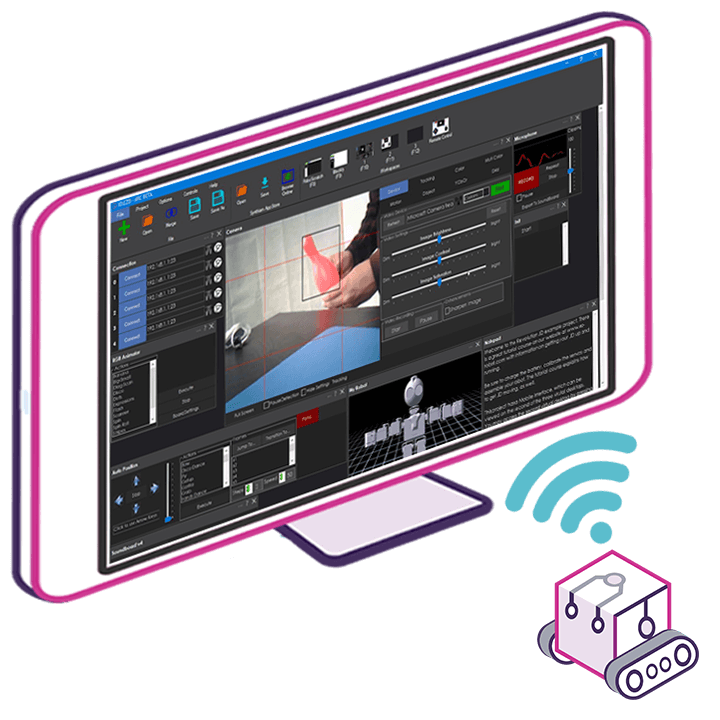Perry_S
I tried posting this as a question but could not get that to work so plz move this over if needed.
I have searched the site and help files and not found an answer, perhaps someone here can help if there is an existing script or plugin that does what I need. Is there a way that I can use a continuous rotation servo with an external potentiometer to act as a standard servo? For instance, on my inmoov I had to strip the pot and limiting pin from a standard servo and install the pot on the shoulder such that the servo would make multiple revolutions through a gearbox while the arm rotated 90 degrees. That's a lot of work.
To be specific, I do not want to use a motor to do this but rather a CR servo. Not sure how the speed would be handled and imagine the pot would have to be read as an analog signal requiring 2 pins to run it but I can accept that. It would allow me to use different gearbox/belt drive/ planetary concepts for multiple revolutions using basic servo commands.
Thanks!

I'm pretty sure no CR servos have a pot internal to them.
I highly doubt that the EZ Robot continuous turn servo has a pot in it. After a lot of searching the highest count multi turn pot I can find has 200 turns and they sell for around $200 USD. Most common are 10 turn pots for much less but they alone would cost more then one of EZ-Robots continuous turn servos. If you want to monitor a continuous turn servo use an encoder with a motor controller that can count it.
Nearly all continuous rotation have a pot. The pot isn’t connected to the output shaft. The pot is accessible on the side to fine tune the stop/center pwm position.
the only type of servo that doesn’t always need a pot is continuous rotation. And there’s two reasons why...
there’s resistors hard wired to emulate the pot and therefore the pwm center is not adjustable
there’s a hard coded value in a digital servos microcontroller. Again, pwm center not adjustable
Remember, a continuous rotation servo is still a servo using the same internals as a standard servo. A pot/decoder is required for servos. It’s what defines the close loop pid behavior of a servo.
I don’t know if ezrobot continuous rotation servos have a pot because I can’t recall if we hardcoded the pwm center for the ezb in the servos digital microcontroller
Yeah there isn’t a pot in the 360 HDD servos. I would have to have a look if they have resistors or if they are hard coded.
I looked into it today, I can confirm that the EZ-Robot 360 HDD servos are hardcoded. While there are 3 pads to solder a potentiometer to, I tried it, the servo does not respond to an added potentiometer.
I was a bit confused about this conversation but I think I see what you guys are saying now.
To confirm and attempt to simplify things here's a summary:
Continuous Rotation (360) servos cannot be positionally controlled in their continuous rotation configuration - where the potentiometer isn't connected to the output shaft. If they have a potentiometer (+ electronics) that is only used for adjusting the center "stop" value, it does not give the servo positional data because it is not connected to the output shaft. If the potentiometer was connected to the output shaft, it would work as a regular servo.
Common 180-degree rotation servos or winch servos can be positionally controlled. These servos have an output gear coupled to a potentiometer inside that is used along its resistive range to determine the position of the servo. A 180 servo can turn into a multi-turn servo if the potentiometer is uncoupled from the output gear and mounted externally. The servo motor will continue to spin forever until the potentiometer reaches the position value that has been specified.
An example of this is the inMoov shoulder assembly. The shoulder assembly uses a 180-degree servo that is coupled to a worm gear that meshes to a slower moving output gear. The 180 servo potentiometer is extended from the servo PCB and mounted to the output gear. The servo will spin the worm gear multiple times until the output gear reaches the intended position.